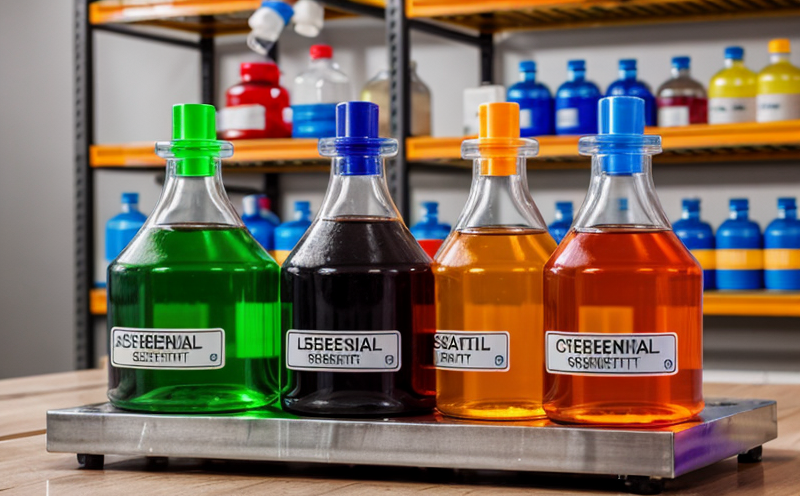Cyanide Testing in Metal-Plated Consumer Items
The testing of cyanide content in metal-plated consumer items is a critical component of ensuring product safety and compliance with international standards. Cyanide, a highly toxic substance, can be present as an impurity during the plating process or intentionally used as a reducing agent for metal finishing. This service is essential to protect consumers from potential health hazards and ensure regulatory compliance.
When conducting cyanide testing on metal-plated consumer items, we focus on various types of products such as electronics, jewelry, automotive components, and home decor. The primary objective is to identify any unintended or excessive levels of cyanide that could pose a risk during use or disposal. This service leverages advanced analytical techniques to ensure accuracy and reliability.
The process begins with careful sample preparation. Depending on the type of product, this may involve disassembly, cleaning, and selective dissolution to isolate the metal layers for analysis. Once prepared, the samples are analyzed using a combination of potentiometric titration methods and inductively coupled plasma mass spectrometry (ICP-MS). These techniques allow for precise quantification of cyanide content down to parts per billion levels.
The significance of this service extends beyond mere compliance with regulations. It also plays a crucial role in enhancing brand reputation by demonstrating a commitment to consumer safety and environmental responsibility. For instance, the presence of cyanide in certain products like electronics can lead to hazardous waste issues if not properly managed during disposal. By detecting and mitigating such risks early on, we help manufacturers avoid costly recalls and potential legal challenges.
In addition to regulatory requirements, companies often seek out cyanide testing services as part of their broader quality assurance programs. This proactive approach allows them to maintain consistent product quality while staying ahead of emerging trends in safety standards. For example, some sectors are beginning to explore the use of alternative plating technologies that minimize or eliminate the need for cyanide altogether.
Our laboratory adheres strictly to international standards such as ISO 14025 and ASTM E1697 when performing these tests. These guidelines provide clear protocols for sample preparation, instrumental calibration, and data interpretation, ensuring consistency across all analyses conducted here. Compliance with these standards not only strengthens our credibility but also facilitates seamless integration into global supply chains.
To summarize, cyanide testing in metal-plated consumer items represents a vital step towards safeguarding public health and fostering sustainable practices within the manufacturing industry. By leveraging cutting-edge technology and adhering rigorously to established protocols, we offer reliable solutions tailored specifically for this challenging yet important area of product safety.
Benefits
Conducting cyanide testing offers numerous advantages that extend far beyond mere compliance with legal requirements. Here are some key benefits:
- Avoidance of Regulatory Penalties: Ensures strict adherence to stringent regulatory standards, thereby avoiding potential fines and sanctions.
- Enhanced Brand Reputation: Demonstrates a strong commitment to consumer safety and environmental responsibility, which can significantly enhance brand image.
- Promotes Consumer Trust: By ensuring that products meet high safety standards, companies build trust with their customers, fostering long-term loyalty.
- Reduces Business Risks: Early detection of potential hazards helps mitigate risks associated with product recalls and legal actions.
- Facilitates Sustainable Practices: Encourages the adoption of greener manufacturing processes that minimize environmental impact.
- Supports Continuous Improvement: Regular testing provides valuable insights into ongoing quality control efforts, enabling continuous enhancement of product safety measures.
In conclusion, incorporating cyanide testing into your quality assurance program not only meets regulatory expectations but also contributes positively to both business operations and society at large.
Industry Applications
Cyanide testing finds application across various industries where metal plating is employed. Some notable sectors include:
- Electronics: Ensuring that circuit boards and other electronic components do not contain harmful levels of cyanide.
- Jewelry Manufacturing: Verifying the safety of gold plating used in precious metal products.
- Automotive Industry: Checking for cyanide residues in brake pads, clutch plates, and other metallic parts.
- Home Decor: Analyzing decorative items like mirrors or picture frames to ensure they meet safety standards.
Besides these specific applications, the testing also supports broader initiatives aimed at reducing environmental impact by promoting eco-friendly plating methods that do not rely on cyanide. This holistic approach ensures that every aspect of production contributes positively towards sustainability goals.
International Acceptance and Recognition
The importance of cyanide testing in metal-plated consumer items is recognized globally through various international standards and certifications. Organizations like the International Organization for Standardization (ISO) and ASTM have developed comprehensive guidelines that serve as benchmarks for laboratories worldwide.
For instance, ISO 14025 provides a framework for third-party conformity assessment of products based on environmental claims. Similarly, ASTM E1697 sets specific criteria for determining the presence of cyanide in various materials. These standards ensure consistency and accuracy in testing procedures, making results universally acceptable across different regions.
Many countries have incorporated these international standards into their national regulations to enforce stricter controls over hazardous substances like cyanide. Compliance with these standards not only enhances a company's global reputation but also facilitates smoother trade between nations by avoiding discrepancies in regulatory interpretations.
In addition to formal certifications, leading brands often seek out laboratories accredited according to recognized bodies such as the American Society for Testing and Materials (ASTM) or the European Committee for Standardization (CEN). Such accreditations signal commitment to excellence and reliability, further strengthening trust among stakeholders involved in product development and distribution.
Overall, adherence to international standards fosters harmonization of testing practices globally, ensuring that all participants contribute towards achieving common objectives related to health protection and environmental stewardship.





